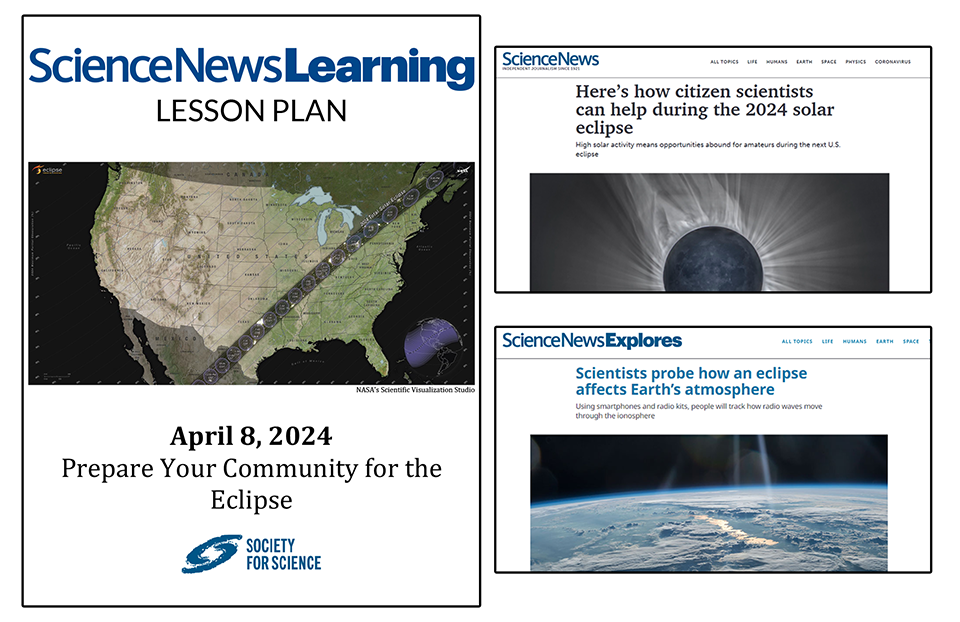Prepare Your Community for the Eclipse
On April 8, 2024, a total solar eclipse will cross North America, passing through towns and cities in Mexico, the U.S. and Canada. In the U.S., more than 30 million people from parts of Texas to Maine reside in the path of totality and will experience the dark sky associated with the total eclipse. A total solar eclipse occurs when the Moon completely blocks the face of the Sun, by passing between the Sun and Earth. The next total eclipse visible in the contiguous United States will be 20 years later, in 2044. Outside of the path of totality, others will experience a partial eclipse.
Explore this page to find information and resources on eclipses, including classroom activities, and how to view one safely. Determine whether your city will be in the path of totality, and if so, how to get involved in eclipse citizen science projects.

Your Guide to the Solar Eclipse
The March issue of Science News Explores contains a special section devoted to the upcoming eclipse that is available online to everyone to download.
Download Special IssueClassroom Activity
This activity will help students learn more about eclipses and how to communicate scientific information through the creation of a video about the upcoming total eclipse on April 8, 2024. Students will practice summarizing information from a variety of Science News Media Group articles and will use their writing skills to create an informative script for their video. For those in the solar eclipse’s path, the video will also discuss where to watch the eclipse and how to get involved in community education projects.
View the Lesson Plan on the Science News Learning Educator Portal
Download the Student Worksheet
Download Lesson PlanGet Involved and Learn Eclipse Science

Scientists Say: Eclipse
This is what happens when a celestial body moves into the shadow of another.
Science News Explores, Author: Bethany Brookshire

How to safely watch a solar eclipse
Certified eyeware will protect against permanent harm to the eyes.
Science News Explores, Author: Kathiann Kowalski

Here’s how citizen scientists can help during the 2024 solar eclipse
High solar activity means opportunities abound for amateurs during the next U.S. eclipse.
Science News, Author: James R. Riordon
Total Solar Eclipse Safety
- Society Store: Solar Eclipse Glasses
- Yardstick Eclipse Activity Kit
- Eclipsmart Solar Filter For 6” Schmidt-Cassegrain Telescopes
- Celestron StarSense Explorer LT 80AZ Refractor Telescope
When watching the partial phases of the solar eclipse directly with your eyes, which happens before and after totality, you must look through safe solar viewing glasses (“eclipse glasses”) or a safe handheld solar viewer at all times.
Do NOT look at the Sun through a camera lens, telescope, binoculars, or any other optical device while wearing eclipse glasses or using a handheld solar viewer — the concentrated solar rays will burn through the filter and cause serious eye injury.
Do NOT use eclipse glasses or handheld viewers with cameras, binoculars, or telescopes. Those require different types of solar filters.
Order Certified Eclipse Safety Glasses


